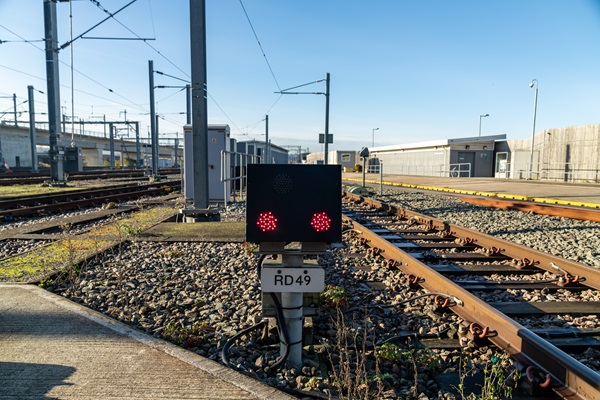Here's what happened after CIRAS reports.

1. Roles and risk
There were no risk assessments for most tasks, such as changing brake pads, electrical work, and working with hazardous substances. The reporter was only aware of one for fuelling. Staff had multiple safety-critical roles during a shift. Other concerns were a lack of clear walking routes and leaking oil pumps.
The oil leaks were fixed. More lighting was installed, and quotes sought for new walking route signs and markings. A risk assessment matrix was put in place for all tasks and briefed to staff. Supervisors, managers, and employees received training. Depot roles were mapped and a permanent production manager considered for the depot long-term.
2. Dust exposure
Dust was building up, becoming worse after sanding down rolling stock. Extractor fans were underperforming and sanding was happening on the shop floor, not in designated areas, due to lack of space. The work was contracted to a supplier and the site owner carried out a full operational review after the report. Some tasks weren’t detailed in the risk assessment and key control measures were missing. Some processes weren’t as effective as required.
The contractor updated the risk assessment and safe system of work, and procured new equipment, with extra extraction. Vehicle preparation was moved to when workshop staff weren’t working. Barriers were installed and ‘no entry’ signs displayed during the work. Processes and procedures for clean-up and maintenance were outlined. Air-quality monitoring would assess the control measures' effectiveness.
3. Staffing and breaks
There was an increase in workload but not staff. Staff were taking shortcuts to complete work within the allocated time. They could miss faults. With more rolling stock, maintenance was taking place outside the depot alongside derailers with no protection from the running line. Staff could also be fatigued due to a lack of breaks including personal needs breaks.
In response, a regular review process was implemented to monitor workload against staff levels. Resourcing levels were reviewed more routinely, at six-month intervals or with a change in workload. There was an immediate review of the operational working instruction between management and staff representatives. A full audit of work activities included a time-and-motion study to check times allocated to tasks were realistic. A new programme would ensure staff took breaks, with supervisors monitoring that this happened.
4. Speeding vehicles
There was a disregard for depot speed limits, said a reporter. The company found one speeding incident on the depot’s system for documenting hazards and near misses. It had been addressed through a new delivery booking system. The security guard said speeding was infrequent. The company said it was likely that sometimes speeding vehicles hadn’t been reported, logged, and addressed. It issued a briefing to staff that speeding was an example of a near miss and should be reported as soon as possible.
5. Storage hazard
Various items were stored in a main electrical switch room. Due to the nature of the room and many of the items being combustible, it was a fire hazard. In the event of an electrical fire, the items would make it worse. They blocked the escape route for staff. In response, all items were removed from the switch room and placed in stores. A plant workshop extension was built for tools and equipment. Planned general safety inspections would focus more on these areas and general housekeeping.
